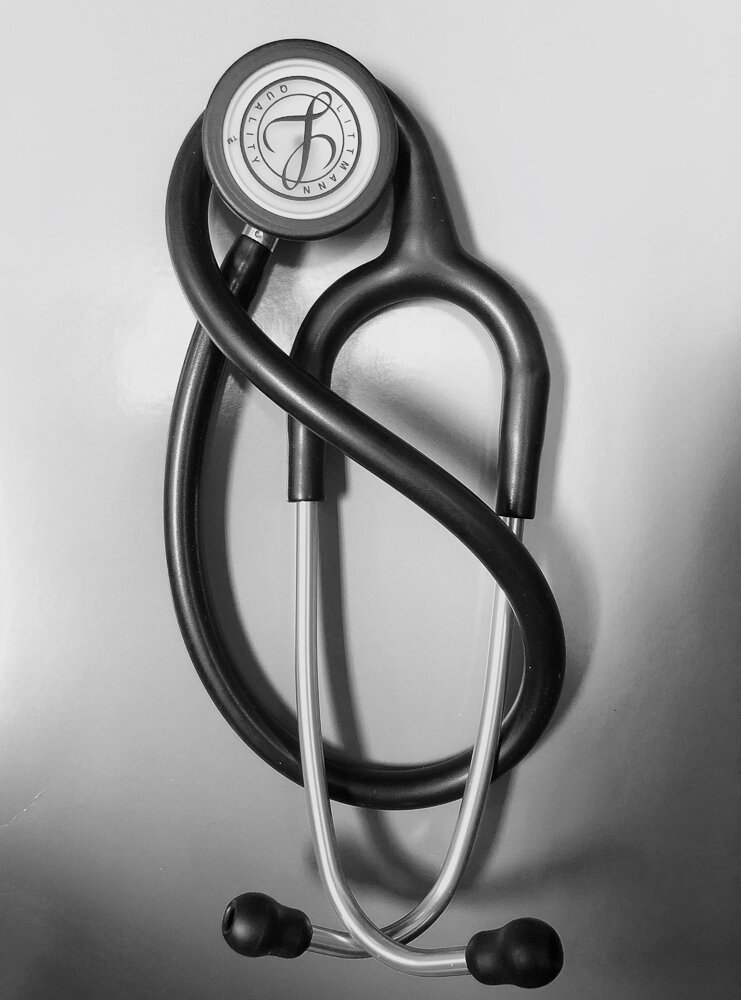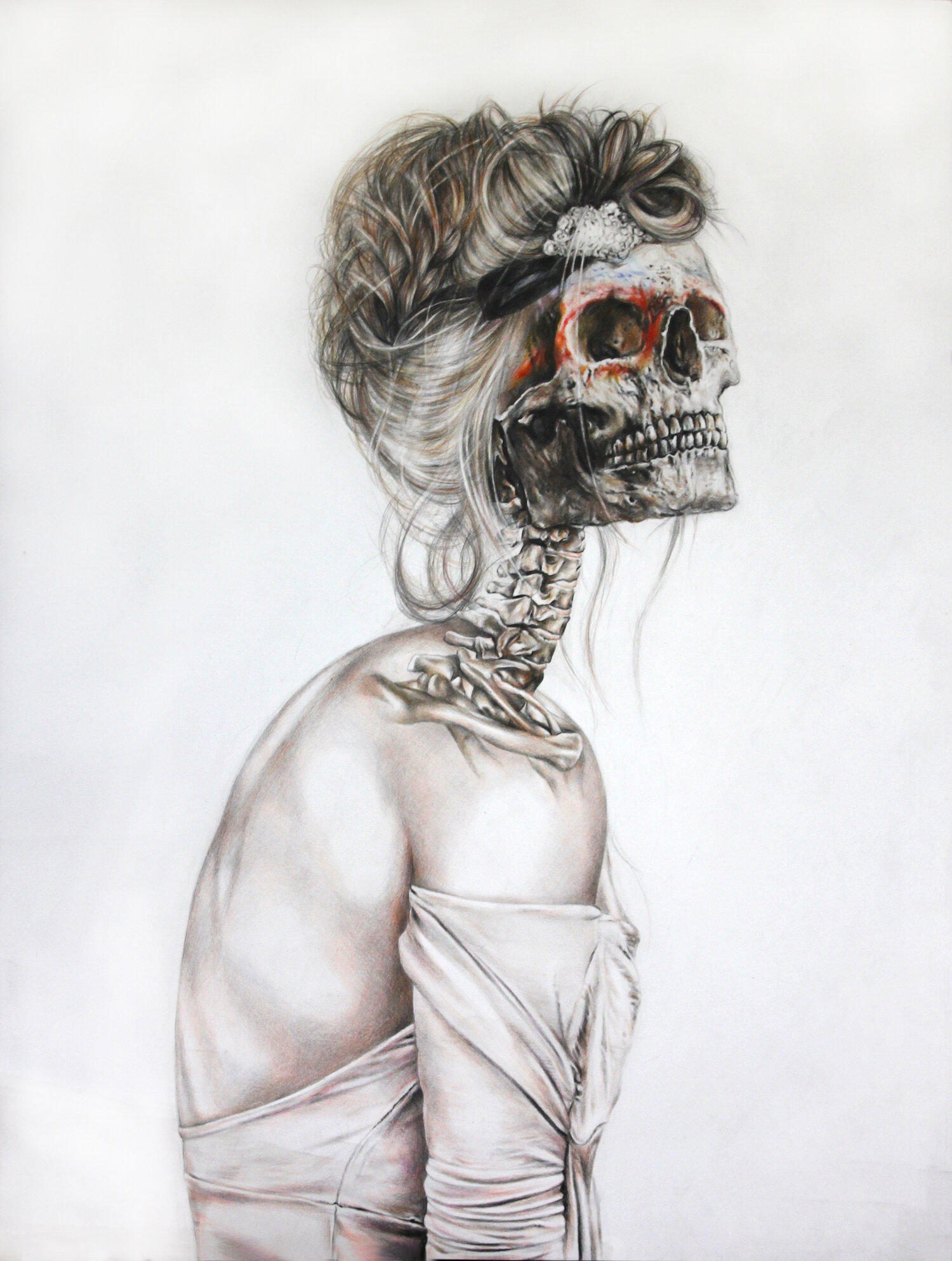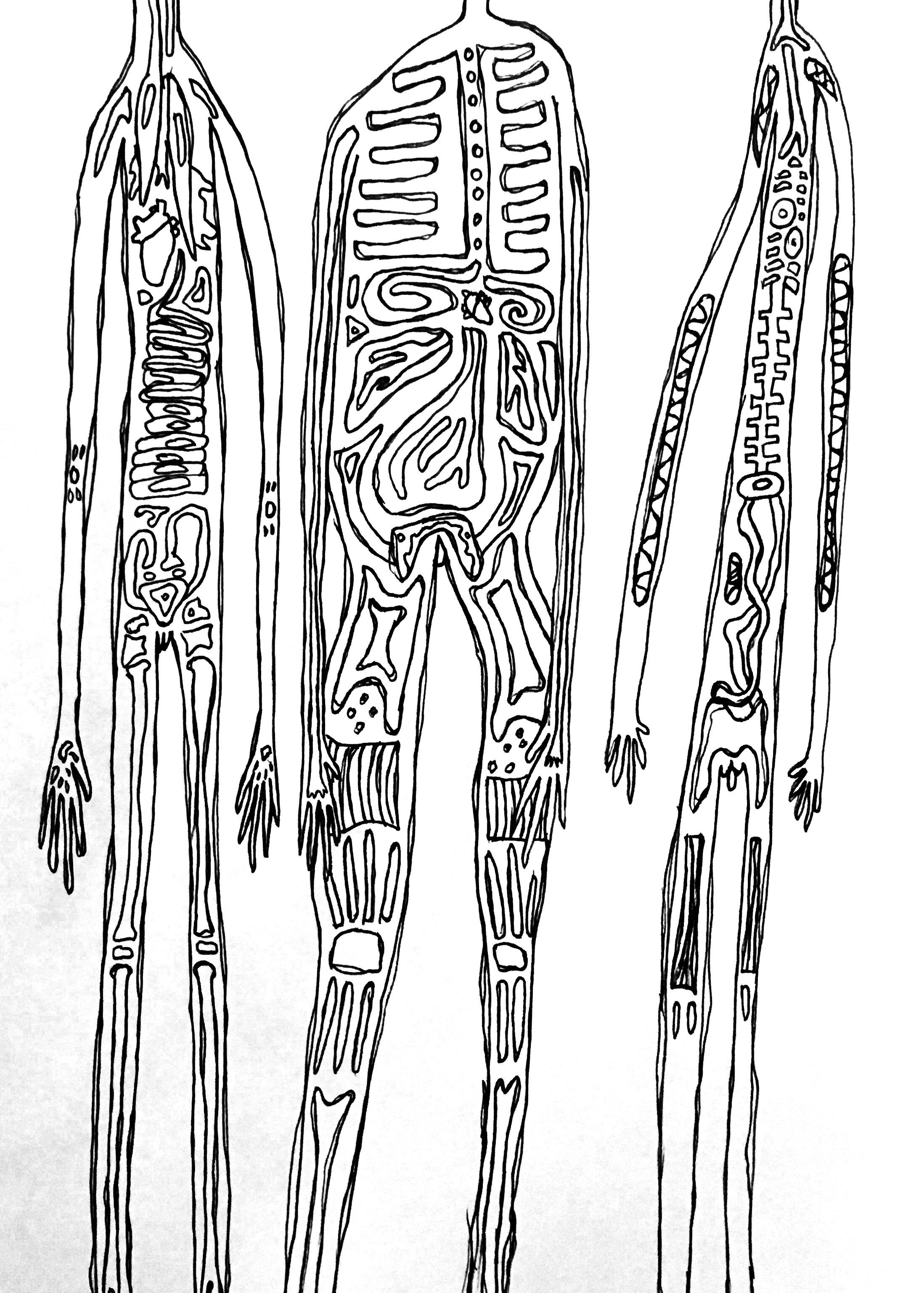In his video “Inside Anxiety and Depression,” William Doan’s words “writing is drawing” were a reminder of my existence as a poet and artist, and how the latter is an identity I felt uncomfortable with for a long time. I squirmed at the creation of “art” out of another’s suffering, even though my father’s illness felt like the only thing worth writing about. Now I sit with a different question: whether anyone’s suffering is entirely separate. I think owning suffering defeats the very aim of why we move it to articulation—to release it, to divide the burden of it, and to comprehend it with others.
Read moreConnecting with the World of Our Patients: A Reflection by Savita Rani
In her poem “Internet Dating for Centenarians” (Intima, Fall 2021), Sarah Smith paints an animated picture of her cheeky and cheerful elderly patient. Smith, a board-certified family physician and author of The Doctor Will Be Late, describes her dilemma about which topic to discuss with her patient—lipids or love.
Read moreThe Body in Bloom: Thoughts on Two Artworks by Simona Carini
(c) Floral Anatomy by Kristen Kelly. FALL 2018 Intima
As a writer, to give life to a story, I reach for my pen and notebook, craft words into images, lines, sentences. I find it inspiring to explore how other artists use their preferred media to tell stories. In my poem “Young Woman Listens to Cyndi Lauper During Dialysis” (Spring 2021 Intima), I open a window into an experience of eating disorder. In contrast, two artists in the Fall 2018 Intima show us how our body can be seen as a garden of elegant shapes and rich colors.
Read moreAuscultating Meaning: Reflections on the Heart of Medicine by Marc Perlman
© Gordian Knot by Elisabeth Preston-Hsu Spring 2020 Intima A Journal of Narrative Medicine
From diaphragm to earpiece, a stethoscope dutifully chaperones a patient’s internal orchestra to a clinician’s ears. This facile acoustic communication not only allows a provider to screen for a wide host of cardiovascular, pulmonary and gastrointestinal anomalies, but it also may be a conduit for moral reflection.
Read moreHealing and Trauma: Recontextualizing Suffering by Sundara Raj Sreenath
Suffering due to trauma or illness often brings with it feelings of disconnect from the world as we knew it when we were healthy. The healthcare provider-healer, therefore, has an important opportunity to intervene in this unique setting and respond to the patient’s cry for help by offering a personal, humanistic touch and guiding them through trauma in addition to clinical management.
Read moreReimagining Chaos in Art and Poetry by Selene Frost
Anatomy of the Vogue by Meagan Wu. Fall 2017 Intima: A Journal of Narrative Medicine
I’ve long been fascinated by the way structure informs poetics and the practice (and in this case—reception of medical care). In my piece “Field Notes on Form,” I extol the ways in which linguistic structure has the remarkable ability to organize our thoughts, increase our signal within the noise, and etherealize the mundane. In “Post NICU Villanelle,” Joyelle McSweeney uses language not only to remediate the chaos of loss and of leaving but also to deconstruct both the poetic form and herself.
Read moreGrowth is Not Linear: A Reflection on Recovery and Healing by Sujal Manohar
I skimmed through “Eight Months after a Suicide Attempt” (Spring 2015 Intima) once as I perused articles in past issues of Intima. But I came back to it, read it again, and again. Andrea Rosenhaft’s non-fictional and personal narrative speaks to the nonlinear recovery process after mental illness. It is also a deeply vulnerable account of the realities of suicidal depression.
Read moreAnatomy Lesson: See the Face of Those Before You by Rodolfo Villarreal-Calderon, MD
For those with the privilege of having participated in a longitudinal cadaver dissection, the connection you build with the donor’s body is known to be a truly unique experience. That bond is part of what I attempted to capture in my poem “Through Damp Muslin.” Especially reflecting on how to express gratitude to the person who once was—and now who is, or at least whose body is—lying before you.
Thresholds and Transgressions, a reflection on ICU chaos, communitas, liminality and Levinas by Nancy Smith
Nancy Smith is a retired Registered Nurse. Though she moved through the many domains of hospital nursing, most of her work took place in an Intensive Care Unit. Her co-workers noticed that she would place small strips of paper with poems by various authors on her locker from time to time along with the pictures of her family.
Read moreHow to Hold Cold Hands by Laura-Anne White
I have spent my career as a nurse working with adult cancer patients. I, too, have experience with the self-protective tool of ‘numbing.’ Last spring, the COVID-19 pandemic hit New York City at full force, and I was temporarily transferred to an inpatient, COVID-19-positive cancer unit. I saw no one aside from co-workers, patients, and other essential workers.
Read moreSpeaking Truth: The Visual Arts Help Clinical Diagnosis by Virali Shah
As a society, we are driven by visuals. Advertisements. Social media. Logos. Paintings. Pictures. It is a 21st century skill to be “visually literate.” Only recently, however, the role of visual literacy has expanded into modern medical training.
Read moreThe Practice of Prolonging Death, a reflection by palliative care physician Chris Schifeling
“Would we rather die too soon or too late?”
The taboo of talking about death combined with a faith in the insomnia of medical technology leads many to err far on the side of dying too late.
Read moreFinding What's Essential in Just Laundry: Painting and Poetry in Dialogue By Alexis Rehrmann
In both the painting and the poem, these particulars are gone but the objects remain and hold an impression of that past life. There’s honor in caring for these objects, in both our daily work and our creative lives.
Read moreOn (Un)Knowing: A Reflection on the Imagination and the Body by poet Michelle Dyer
©What Lies Beneath by Sapana Adhikari Spring 2020 Intima A Journal of Narrative Medicine
As I lay on the table while the doctor poked and prodded inside my breast, clipping the lump inside me like flower stems, I imagined what the thing might look–what, exactly, lay beneath, and if it had a name.
Read moreMy COVID Hero: How Art Helped Me Reflect on a Global Pandemic by Dr. Brandon Mogrovejo
One late evening, just two months into my intern year in Pediatrics and seven months into a forever changed New York City, I sat down and drew. I drew from a place of anxiety, working the equivalent of two full-time jobs in a hospital during a time when the people I care for, my loved ones and my patients, were under great strain.
Read more‘Differential Diagnosis’ Can Be A Lifesaver, a Reflection by Colleen Corcoran
© Differential Diagnosis by Yan Emily Yuan Spring 2020 Intima A Journal of Narrative Medicine
Accurate differential diagnosis can save a life. By being able to determine clearly how one outlying factor or the combination of a group of signs and symptoms tips the scale to the correct pattern confirmation and treatment, our lives can be shaped, saved and lost in this qualifying lens of time. It’s integral to the practice of medicine, but also in many ways to how we make decisions in life. A positive or negative result, a clustering of symptoms, the ticked boxes and specimen samples that can reveal so much as to how we define our experiences of life and are able to move forward.
Read moreIn This Time of Corona: Many Stories, Many Lives, a reflection by surgeon Daly Walker
Sapana Adhkari’s “Covid’s Agony,” an evocative and gruesome depiction of the sagittal section of a human head screaming in agony, represents, in a single image, the anguish seen in the corona-captured characters of my short story, “Resuscitation.”
Read moreOn Bodies and Minds: A Reflection on Raina Greifer’s Artwork 'Bodies' by Diane Forman
Raina Greifer’s artwork “Bodies” (Spring 2018 Intima) compels viewers to confront their own preconceptions and biases about body form. Her three headless, faceless bodies, of various sizes and depths, present a seemingly endless network of intertwined organs and bones, of breastplates and intestines and veins. Greifer urges the viewer to consider vulnerability, in the context of these drawings.
©Bodies by Raina Greifer. Spring 2018 Intima
Of course the body is much more than a composite of bones and organs, but a human cannot survive without the exquisite interplay of these parts. Greifer’s drawing asks me to consider not only the body’s intricate internal structure, but the external form shown to the world. Although the drawings are deliberately missing heads, the artist highlights the theme of vulnerability, which can only be contemplated through the integral component of the mind. Our minds magnify our vulnerability; our thoughts determine how we visualize ourselves, how we feel in our own skin.
After a lifetime of my own struggle with body dysmorphia, I was forced to confront both the mind and body’s strength and fragility when dealing with my daughter’s restrictive eating disorder, explored in my piece “Holding my Breath” (Spring 2020 Intima). Helplessly, I witnessed the ways in which the body fails without sufficient nutrition; how the body is reduced to conserving energy for the heart, brain, muscles, digestion. The body truly becomes a vessel of organs and bones all vying to survive.
But the starved mind is trying to survive too. Recovery is dependent on replenishing not only the organs with required energy, but the mind with recognition of the body's miracle and potential, whatever its size. I value Raina Greifer’s artwork, which encourages me to consider the vulnerability of the mind, and its intimate connection with the complexity of the body.
Diane Forman is a writer and educator. After a long career as writing tutor and educational consultant, Forman is currently working on a series of essays and a memoir. Additionally, she leads adult writing groups and retreats on the north shore of Boston. She holds a BS in English and Education from Northwestern University, and an Ed.M. from the Harvard Graduate School of Education and is an AWA affiliate, trained and certified to lead workshops in the AWA (Amherst Artists and Writers) method. Her non-fiction essay “Holding My Breath” appeared in the Spring 2020 Intima: A Journal of Narrative Medicine.
Dads, Daughters, Death by Pat Arnow
Pat Arnow is a photographer, writer, and more lately, a cartoonist in New York. She often writes and draws stories about death.Her artwork “A Death in Chicago, 1972: Elisabeth Kübler-Ross and My Family” appears in the Spring 2019 Intima: A Journal of Narrative Medicine.
A dad has cancer. He decides not to undergo a risky, possibly ineffective operation that might save him. His family supports his decision. He goes home to die.
Karen Dukess writes about this in “Day One of Dying” (Fall 2016) as if those choices were an everyday thing.
Well they are—now.
In this lovely memoir of a beloved father, it is striking to me how things have changed from when my dad faced terminal cancer in the early 1970s. Then the rule was maximum intervention no matter what the prognosis. No one would quibble with doctors. People died in hospitals.
That’s how the story begins in my comic, “A Death in Chicago, 1972: Elisabeth Kübler-Ross and My Family” (Spring 2019). As my father lay dying in a hospital bed, he received a remarkable visit from Kübler-Ross, who had recently written On Death and Dying. She allowed my dad to say out loud how he wanted to stop painful treatments and go home to die.
My father’s homecoming came on the cusp of change for the dying and for those close to them. We started talking about death. The hospice movement grew. There is help for what are still the hard and sad days of dying.
Yet so much is the same including the moments of grace. I recognized this lesson, a gift from our dads as Dukess describes it:
“Day 6 of Dying—I am becoming a better listener. Really, what can you say?”
Pat Arnow is a photographer, writer, and more lately, a cartoonist in New York. She often writes and draws stories about death.With “A Death in Chicago, 1972,” she tells the story of her father’s dying, which involved Elisabeth Kübler-Ross, because it’s a personal story from a time of momentous change in the way we think about death. Her artwork “A Death in Chicago, 1972: Elisabeth Kübler-Ross and My Family” appears in the Spring 2019 Intima: A Journal of Narrative Medicine.
© 2019 Intima: A Journal of Narrative Medicine








